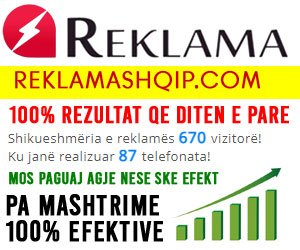Why don’t men have a Gwyneth and a Goop?
Where are all the male lifestyle influencers making millions?

When you think of the words ‘celebrity lifestyle influencer’ the first person that comes to mind is always a woman.
Depending on your tastes – and age – it might be Love Island extraordinaire Molly-Mae Hague, any of the billion dollar-laden Kardashian sisters, Gwyneth Paltrow and her wellness brand Goop, and now possibly even Meghan Markle, whose As Ever range selling essentials like $28 honey sold out in half an hour last week.
One question: where are all the men?
Okay, we’ve heard about Andrew Tate. But he’s an extreme misogynist whose lifestyle I’d like to think most men wouldn’t touch a barge pole. I’m talking about the normal, beige-wearing, white-toothed, everyday blokes selling garish trainers who have all the men you know in a chokehold.
In case you’ve been in a coma for 20 years, an influencer, in its Google dictionary definition is: ‘A person with the ability to influence potential buyers of a product or service by promoting or recommending the items on social media.’
There are different sub categories too, depending on follower count.
Meghan’s As Ever range fold out in half an hour last week (Picture: KOLA SULAIMON/AFP via Getty Images)You’ve got micro (sub 100,000 followers), macro (less than 1,000,000 followers) and then – the greatest of all – celebrity influencers, who boast over one million followers.
But why are they allwomen?
Women are more successful influencers than menDue to their stratospheric success in online spaces, women lifestyle influencers attract bigger deals, agents, money, and publicity, than men.
‘That has just always been a trend in the whole time I’ve been doing this job – women command more cash than men,’ says Emma Bunning, who has run On The Box Talent for nine years.
‘This is probably the one bloody industry where women actually do earn more. Men earn so much more generally, don’t they in life? Let us have something!’
Steven Bartlett is a wellness influencer who perhaps comes closest to this success in building himself a personal brand with his 4.2million followers, and promoting his businesses through them.
Joe Wicks is another male influencer flogging his app, cookbooks, and subscriptions to his fitness-minded 4.8million followers.
We rarely call male influencers what they areBut the likes of Wicks and Bartlett are rarely described as influencers.
The term, when it comes to celebrities, only seems to be associated with women.
Google defines Joe Wicks is a ‘fitness coach and TV show host’ while Steven Bartlett is an ‘entrepreneur and investor’ – despite both being influencers by definition.
‘We call them businessmen, we call them public figures, we call them creators… because, I think, influencer could be seen as a bit naff,’ explains Emma.
Joe Wicks is a lifestyle influencer, but his influence is limited (Picture: Kate Green/Getty Images for BFI) Likewise, Steven Bartlett’s influence is wide but not as loyal as the likes of Molly-Mae (Picture: Max Mumby/Indigo/Getty Images)‘People can make quite snap judgments about influencers being a bit tacky or a bit embarrassing, or it might be seen as a derogatory term. But if you say I’m a content creator, or a public figure, that that tends to have more kudos.’
Even if they were called influencers, these men are not in the same league as Molly-Mae’s 8.4m followers, Gwyneth’s 8.7m, and absolutely not Kylie Jenner’s 394m – in size, or loyalty.
It’s hard to imagine the Dragon’s Den star dropping a clothing line and see it sell out in 24 minutes like Molly-Mae’s Maebe. Or for any Joe Wicks fan to tune into his YouTube religiously every week to watch him just… living his life.
Gwyneth Paltrow is GoopLook at Gwyneth, who is first an actor and second a lifestyle influencer.
She launched Goop in 2008 to ‘crack open taboos’ with products like vagina-scented candles, vibrators, and less memorable – but no less important – skincare products. Ever since her name has been inextricably linked to Goop.
While male celebrities have started plenty of lifestyle brands, and successfully too, they simply aren’t as tightly associated with them.
Did you know Justin Bieber launched a clothing brand called Drew House that sold out within hours in 2019? Perhaps not. Or that Harry Styles’ beauty brand Pleasing has skyrocketed his net worth to a reported £120million? Maybe.
To view this video please enable JavaScript, and consider upgrading to a web browser that supports HTML5 video
Up Next
Previous Page Next Page Gwyneth Paltrow embodies the aspirational Good brand (Picture: Layne Murdoch Jr./Getty Images for goop)But everyone who knows Gwyneth knows Goop.
These male celebrities are not an embodiment of their brands – but rather their brands are an extension of them.
While they have launched, endorsed and been the face of lifestyle products, they have never owned a singular lifestyle brand like Goop.
Perhaps it’s because it was the first big celeb-driven lifestyle brand to gain momentum. Maybe it was the focus on vaginas that hit headlines and did it. Or a bit of both.
Women are subject to more scrutiny than men‘Any publicity is good publicity,’ is a popular proverb for a reason, meaning that even if it’s negative press, at least people are aware of your existence.
Women influencers’ success could be in part down to them being more controversial. Just look at outrageous old Goop. And Meghan Markle – a famously divisive figure – who launched her As Ever lifestyle range yesterday. It sold out within half an hour of going live.





